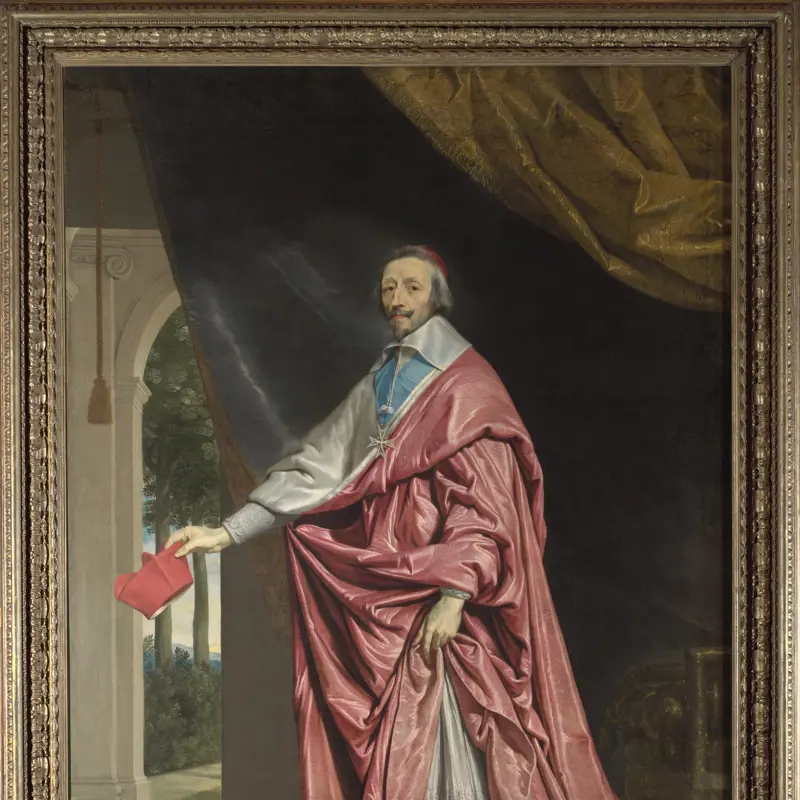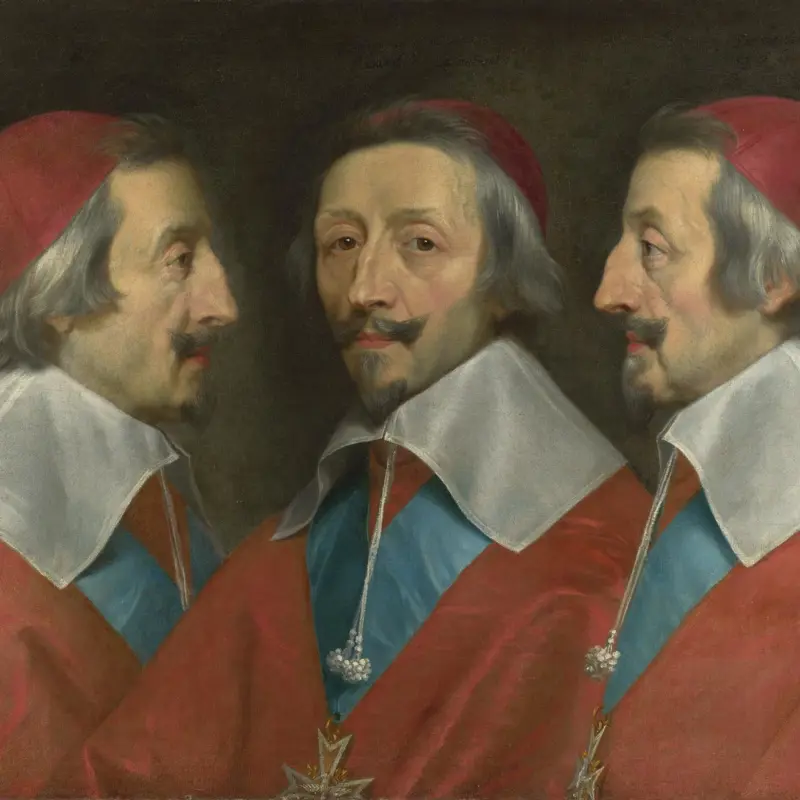Philippe de Champaigne, 'The Dream of Saint Joseph', 1642-3
About the work
Overview
According to the Gospel of Matthew, an angel appears to the Virgin Mary’s husband, Joseph, in a dream. Champaigne shows the angel gesturing towards both heaven and the Virgin Mary, confirming that Christ has been conceived through the Holy Ghost. Kneeling in front of an open Bible, Mary glances towards the angel, her arms crossed over her chest.
Joseph was the patron saint of workers, particularly carpenters and joiners. He is surrounded by craftsman’s tools and portrayed as a youthful rather than elderly man, as was more common. The ornately carved chair and deeply padded cushion on which he rests his head are at odds with the simplicity of his yellow cloak and sandals. His appearance signifies his humility, which the viewer would have been encouraged to follow.
This subject was painted frequently during the seventeenth century, and an annual day of devotion to Saint Joseph (19 March) was introduced in 1621.
Key facts
Details
- Full title
- The Dream of Saint Joseph
- Artist
- Philippe de Champaigne
- Artist dates
- 1602 - 1674
- Date made
- 1642-3
- Medium and support
- oil on canvas
- Dimensions
- 209.5 × 155.8 cm
- Acquisition credit
- Bought, 1957
- Inventory number
- NG6276
- Location
- Room 29
- Collection
- Main Collection
- Frame
- 19th-century English Frame
Provenance
Additional information
This painting is included in a list of works with incomplete provenance from 1933–1945; for more information see Whereabouts of paintings 1933–1945.
Text extracted from the ‘Provenance’ section of the catalogue entry in Humphrey Wine, ‘National Gallery Catalogues: The Seventeenth Century French Paintings’, London 2001; for further information, see the full catalogue entry.
Bibliography
-
1958The National Gallery, The National Gallery: July 1956 - June 1958, London 1958
-
1976B. Dorival, Philippe de Champaigne, 1602-1674: La vie, l'oeuvre, et le catalogue raisonné, Paris 1976
-
1991C. Wiggins and G. Greer, Paula Rego: Tales from the National Gallery (exh. cat. Plymouth City Museum and Art Gallery, 25 April - 1 June 1991; Middlesbrough Art Gallery, 15 June - 20 July 1991; Whitworth Art Gallery, 3 August - 25 September 1991; Cooper Art Gallery, 22 October - 30 November 1991), Plymouth 1991
-
1994A. Thomas, An Illustrated Dictionary of Narrative Painting, London 1994
-
1995J. Gonçalves, Philippe de Champaigne, le patriarche de la peinture, 1602-1674, Paris 1995
-
2001H. Wine, National Gallery Catalogues: The Seventeenth Century French Paintings, London 2001
-
2001
C. Baker and T. Henry, The National Gallery: Complete Illustrated Catalogue, London 2001
About this record
If you know more about this work or have spotted an error, please contact us. Please note that exhibition histories are listed from 2009 onwards. Bibliographies may not be complete; more comprehensive information is available in the National Gallery Library.


